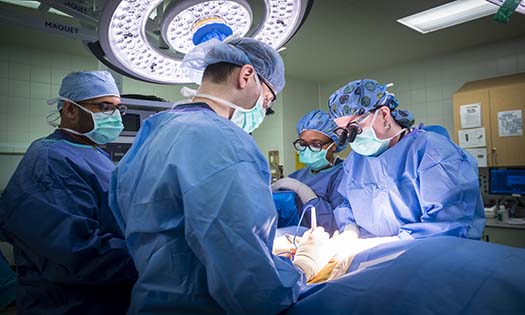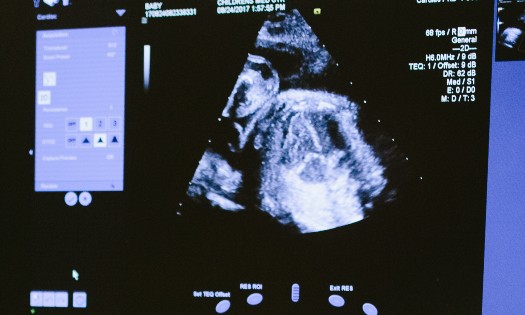Primary ciliary dyskinesia (PCD) is a rare disorder caused by mutations in genes that control the structure and function of cilia. While there is no cure for PCD, early recognition and treatment can slow the progression of lung damage, improve quality of life and increase life expectancy. But, only a limited number of centers nationwide have the experience and technology to diagnose and manage PCD. In May 2021, Children's Health℠ became the first hospital in North Texas and only the 16th in the nation to be granted center accreditation by the PCD Foundation.
"Underdiagnosis and misdiagnosis are global challenges with PCD, and we know there are many patients that are not being recognized as early as they could be," says Yadira Milagros Rivera-Sanchez, M.D., Pediatric Pulmonologist at Children's Health and Associate Professor at UT Southwestern. "It was important to our team to pursue this accreditation so we can offer the latest, most innovative diagnostics and treatments to improve patient outcomes."
Knowing When to Refer: Four Criteria for Primary Ciliary Dyskinesia
To become accredited, Dr. Rivera and her colleagues established liaisons in our Level IV NICU, our PICU, and in departments such as cardiology and ENT that could see PCD patients before diagnosis. This enables our PCD experts to help providers recognize the disorder as early as possible.
"PCD is a rare disease, and the American Thoracic Society first published diagnostic guidelines in 2016, so it's not uncommon for providers outside of pediatric pulmonology or ENT to be unfamiliar with the diagnostic criteria," Dr. Rivera explains.
To be considered a candidate for diagnostic evaluation for PCD, patients must meet two of these criteria:
Needing supplemental oxygen without any other explainable cause or having lower pneumonia in the first 12-24 hours of life
Laterality (organ placement) defects, including situs inversus totalis, situs ambiguous/heterotaxy and congenital heart defects
Daily moist cough that starts during infancy and is not seasonal
Daily nasal congestion that begins during infancy and is not seasonal
It is recommended that these patients are sent to a PCDF accredited center when possible.
Early diagnosis of PCD
To earn the accreditation, Dr. Rivera and her team obtained a nasal nitric oxide analyzer, which is the first step in the evaluation of patients older than 2 years of age who meet the PCD evaluation criteria, per the new diagnostic guidelines.
“This technology allows for a more precise diagnostic pathway and the avoidance of unnecessary testing,” Dr. Rivera says. "Nasal nitric oxide levels are very low in patients with PCD, and this study has about a 98% sensitivity, so it's very accurate in screening PCD patients. These levels can be low in cystic fibrosis and during acute respiratory illnesses as well, but otherwise, false positives are rare.”
Additional PCD diagnostic tools available at the Children’s Health PCD center include:
Sweat test to exclude cystic fibrosis
Genetic testing
Transmission electron microscopy for ciliary ultrastructure
"It's very important to use a combination of these studies to make a diagnosis because a negative result for any of them doesn't necessarily rule out PCD," Dr. Rivera says.
If the patient meets the cutoff metric of 77 nanoliters of nasal nitric oxide per minute, the next step is to rule out cystic fibrosis with a sweat test. If that test is negative, Dr. Rivera and her team repeat the nasal nitric oxide test to confirm the low levels. Then they move forward with genetic testing for the more than 45 gene mutations associated with PCD. If the mutation panel is positive, the PCD diagnosis is confirmed, and no further studies are required. But genetic testing will miss about 20-30% of patients.
"If the mutation panel is negative, then we do electron microscopy, which will also miss about 30% of the patients," Dr. Rivera says. "It could be that these two other criteria – genetic testing and electron microscopy – are not diagnostic.”
If the patient is younger than 2 years old, nasal nitric oxide testing is not yet standardized, and Dr. Rivera begins with genetic testing. Then she proceeds with electron microscopy if the genetic tests are not diagnostic.
"If we confirm a PCD diagnosis, we can be more aggressive in the patient's care," Dr. Rivera says. "If we don't diagnose PCD, we can move on and try to identify other causes. Either way, we help the patient get the care they need.”
Comprehensive PCD Care
After a PCD diagnosis is confirmed, treatment includes aggressive airway clearance, antibiotics for exacerbations, and sometimes chronic antibiotics, such as Azithromycin.
"An important first step is to remove any medications that don't benefit patients with this disease and that add unnecessary potential side effects," Dr. Rivera says. “In addition, being an accredited center allows us to work together with other accredited centers that keep us up-to-date with all the literature and research advances to continue to provide state-of-the-art treatment.”
Our PCD team also works closely with other disciplines to provide collaborative care. For example, many PCD patients have chronic ear and sinus infections, and hearing deficits.
"We can engage with any specialties very easily to provide comprehensive care for our patients, but ENT and GI are particularly crucial partners," Dr. Rivera says. "ENT may place tubes in the ears for drainage, perform sinus surgery or simply coordinate with us to share the same anesthetic for any studies that need to be completed. GI helps us improve nutrition for the patients that need it."
This type of comprehensive care is one reason why the PCD Foundation recommends that patients visit an accredited center every three months or at least once a year. Visiting a PCDF center once a year is considered adequate for patients that continue to see a pediatric pulmonologist regularly and don’t have easy access to a PCDF center.
Shaping the Future of PCD Care
As an accredited center, we have the benefit of participating in the PCD patient registry. This registry aims to collect data on PCD patients and advance care through the Genetic Disorders of Mucociliary Clearance Consortium (GDMCC).
"Many of our patients will continue to see their primary pulmonologist and plan to visit our clinic once a year for an evaluation," Dr. Rivera says. "With the registry, they'll have access to the latest clinical trials, and this research will help us understand these patients better to improve patient outcomes – now and in the future."
Learn more about innovative pulmonary medicine at Children's Health >>
Image disclaimer: This photo was taken prior to COVID-19. See our system COVID-19 safety measures.


